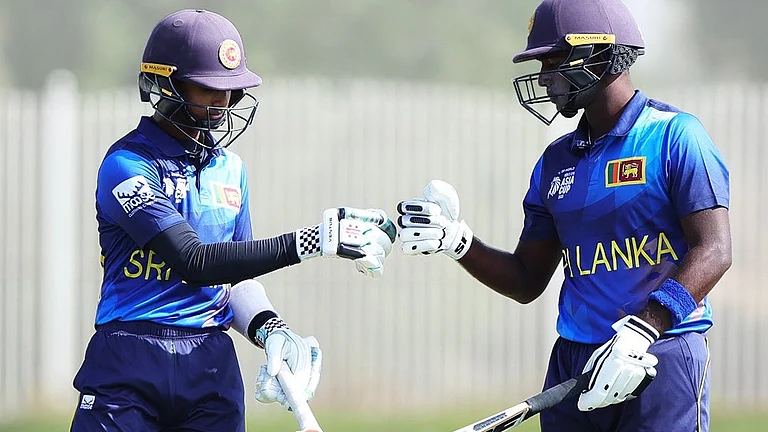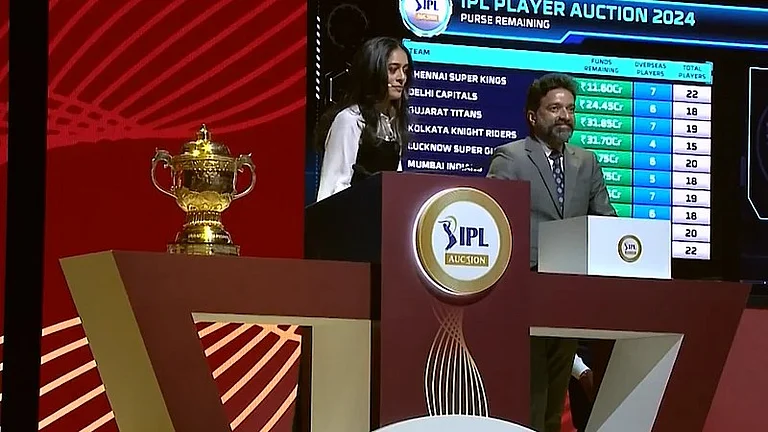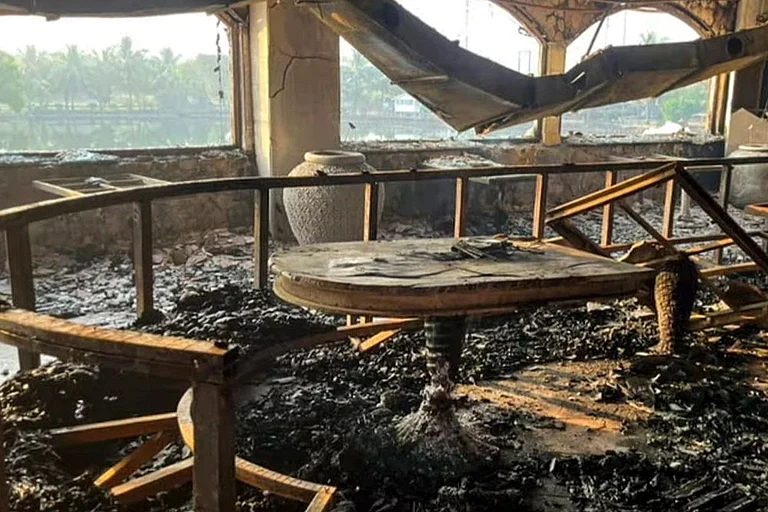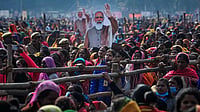The Bharatiya Janata Party (BJP) has cited its sudden and aggressive push for one nation one election (ONOE) as a single solution related to a range of policy and governance issues. While the efficacy of ONOE as a solution to these problems is debatable, the ruling party realises that ONOE has the potential to be the solution to one of its biggest political problems.
The BJP’s era of electoral ascendancy that began in 2014 has been marked by its domination of the country’s political landscape, the near decimation of its arch-rival Congress, the party’s expanding electoral footprint in regions long considered to be inhospitable to its brand of politics and two thumping national mandates.
But the saffron party, which boasts of an unparalleled and much-envied electoral track record in the last decade, has one apparent weakness—it has suffered electoral reverses in state elections. To be more precise, the BJP’s seemingly indomitable election machinery has struggled with anti-incumbency in state elections, resulting in failure to defend state governments.
A data point highlights the chink in the BJP’s election armour. Since 2014, there have been 13 elections in big and medium-sized states where the BJP, or its alliance, was the incumbent. The BJP’s strike rate while retaining governments is a modest 46 per cent. Contrast this with the performance of non-BJP, non-Congress state governments. Eighty per cent (8 out of 10) of non-BJP, non-Congress governments managed to retain power in state elections held between 2014 and 2023.
The yawning gap between the re-election rate of the BJP state governments and non-Congress, non-BJP state governments clearly demonstrates that the seemingly invincible BJP is vulnerable while battling anti-incumbency and defending governments in state elections.
Politics of Credit and Blame
A common view about the BJP’s electoral setbacks in state assembly elections is linked to the party's overreliance on Prime Minister Narendra Modi. It holds that there are limitations to Modi’s ability to influence state elections, especially when the BJP is the incumbent party in a state where it is on a sticky wicket.
To put it succinctly, despite his high popularity and great electoral purchase, Modi cannot help an unpopular BJP government get re-elected when it is facing heavy anti-incumbency in a state election. But this argument does not capture the exact relationship between the PM’s popularity, his ability to harness it and the BJP’s dismal record in state elections. The BJP’s poor record in state elections, especially when it is the incumbent, is not a product of the limitations of the Prime Minister’s popularity or ability to influence state verdicts. Instead, it is due to the exceedingly high levels of popularity of Modi that have helped him and the party nationally but as a side effect harmed the prospects of the party and its leaders at the state level.
In other words, Modi’s stratospheric levels of popularity and the resultant success at the national level has come at the cost of depleting popularity of BJP’s state governments and CMs and its string of setbacks at the state level.
Central to this phenomenon is the politics of blame and credit. The BJP’s personality-driven and image-based politics, which is overly reliant on Modi, has resulted in centralisation of all credit for him and his government. Conversely, it has meant that all blame for failures has been decentralised and wholly and completely deflected to the BJP-run state governments.
In a paper published in 2019, Rajeshwari Deshpande, Louise Tillin and K K Kailash found that people were more likely to give credit to the Modi government for welfare schemes than to state governments. At the same time, all the anger and the anti-incumbency that stems from policy failures or failure to deliver on election promises of the Modi-led Union government is all getting directed at the BJP-led state governments.
Thus, the popular assumption that there is very little or no anti-incumbency against the Modi government is not accurate. But the blame for its failures and the anti-incumbency reserved for it is passed on to the BJP-led state governments. Thus, the BJP-led state governments are not only not getting credit for their measures like Direct Benefit Transfers (DBTs) or welfare measures but they are also facing double anti-incumbency—even getting a sizable portion of anger reserved for the Union government.
For instance, during the pandemic, almost all the anger due to the mismanagement of the pandemic—from the shortage of oxygen cylinders to life-saving medicines and equipment— was getting directed at the state governments. The overwhelming sentiment was that Modi was trying his best but his subordinates, including BJP CMs, were failing in fulfilling their responsibilities.
Similarly, multiple post-poll surveys have shown that in most assembly polls that the BJP has lost—including the Karnataka polls that were held this year—the disenchantment due to the lack of job growth was a major factor. While delivering on the promise of jobs was a central pitch of Modi’s campaign in 2014, it appears as if the electorate is only punishing state governments, especially BJP governments, for the failure on that front.
The constant refrain that ‘Modi knows it all and does best’ and slogans like “Modi tujhse bair nahi, Vasundhara teri khair nahi” (heard during the 2018 Rajasthan state polls) are symptoms of the centralisation of credit and decentralisation-deflection of blame—a side-effect of the Modi brand of politics that the BJP has heavily invested in.
In a way, the voter is directing all anger (some of which is reserved for the Union government, too) to the state (especially, the BJP-ruled state) governments. This is a consequence of the old adage getting flipped—success has many fathers, failure none. For much of the electorate that leans towards the BJP today, success has only one father— Narendra Modi—and failure many—Modi’s “inefficient” subordinates—all of whom deserved to be punished.
Lack of Bench Strength
In 1963, TIME magazine, commenting on Nehru’s Congress, remarked: “A celebrated criticism of Nehru is that he resembles India’s Banyan tree, which proverbially kills every other organism that grows in its shade.”
While Modi might not like it, the words can be used to aptly sum up the leadership crisis in today’s BJP. Today’s Modi-led BJP is similar to Nehru or for that matter Indira’s Congress in more ways than one. It suffers from the same ailment that the Congress suffered in the past—an extremely strong central leadership has resulted in an undesired side-effect— the absence of strong regional satraps.
In the Modi era, the BJP has used a signature template to fight provincial polls—Let Modi, the biggest mascot and vote puller, lead from the front with local leaders taking a backseat. While this template paid off initially, it is no longer working. Furthermore, it has meant that unlike the BJP of yesteryear that had an impressive line of second-and-third rung leaders and regional satraps, today’s BJP, under the centralised command of Modi-Shah, lacks bench strength.
Four out of ten current BJP CMs are ex-Congressmen. Besides Yogi Adityanth, none of the current BJP CMs can claim to have a strong independent base of their own. Even seasoned regional stalwarts like Vasundhara Raje and Shivraj Singh Chouhan have been cut to size. The one nation one leader poll template used by the BJP in state polls and the lack of strong regional satraps have meant that the party has failed to localise elections by focusing on local issues, resulting in a series of losses in key state elections.
Politics, Not Policy
The ONOE template used by the BJP in the Modi era, which has failed to click in crucial state polls, has two major side-effects—the lack of strong satraps in the party and, more importantly, the BJP state governments facing the heat due to double anti-incumbency. By pushing for ONOE, the BJP hopes to fix one of its most apparent weaknesses i.e. record in state polls by harnessing its biggest strength—Modi’s popularity and his vote-catching ability.
Its calculations are clear—simultaneous polls would make it easier for it to make every state election a referendum on Modi. While the BJP has so far been largely unsuccessful in making state polls a referendum on Modi, simultaneous polls would make its job much easier. This way, the party can play to its strength—turning every state poll into a referendum on Modi and his government thereby tiding over local issues making up for the double anti-incumbency faced by its local governments and its lack of strong local figures.
The BJP is confident that ONOE can be the fix for its political woes but it cannot run the risk of ruling out that the law of diminishing returns can catch up with its biggest asset— Narendra Modi’s popularity and his vote-catching abilities.
(Views expressed are personal)
(This appeared in the print as 'Failed Mascot Model')
Omkar Poojari is a political researcher and columnist. His areas of interest include party politics and electoral competition in India, coalition politics, populism and voter behaviour.






















